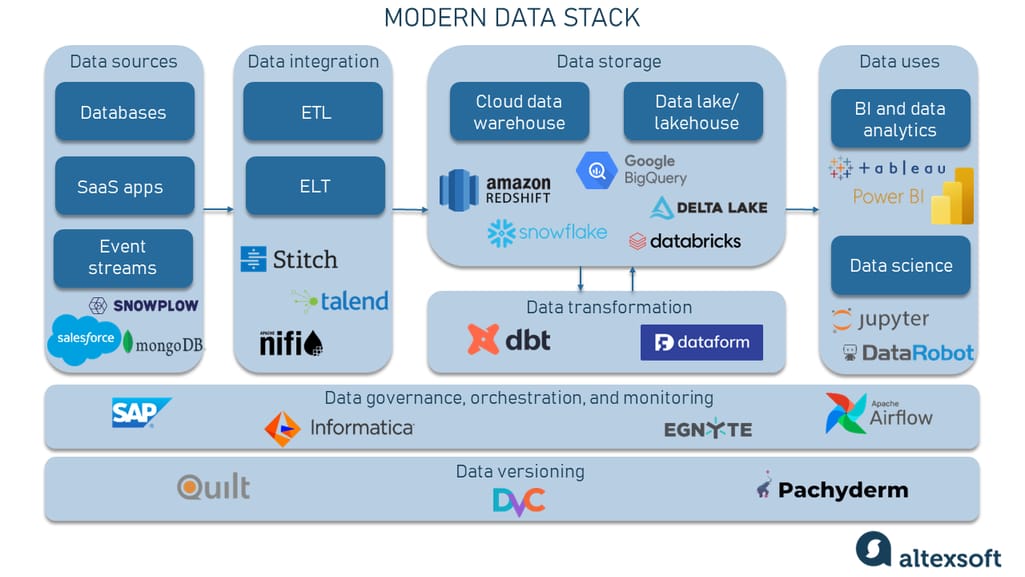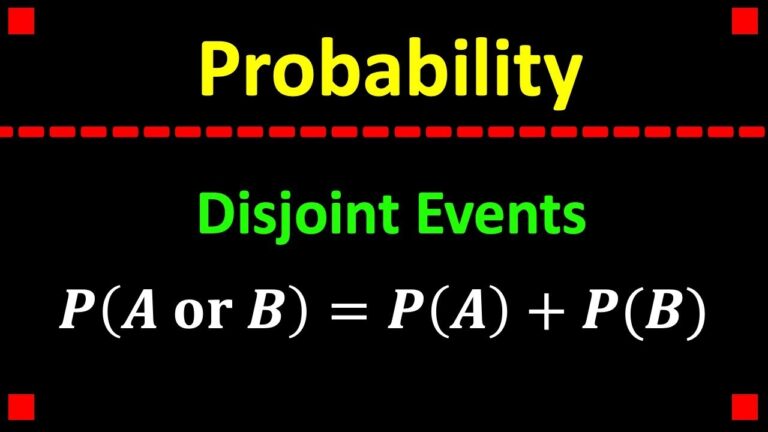Understanding the concept of disjoint events is crucial in the realm of statistics, as it lays the foundation for various probability calculations and statistical analyses. Disjoint events, also known as mutually exclusive events, refer to events that cannot occur simultaneously. In simpler terms, if one event happens, the other event cannot occur at the same time. This intriguing aspect of statistics often baffles learners, but delving into the essence of disjoint events unveils a world of probabilities and outcomes. In this blog, we will unravel the mystery surrounding disjoint events in statistics, exploring their significance, implications, and practical applications in data analysis and decision-making processes.
Introduction to Disjoint Events
Disjoint events, also known as mutually exclusive events, are events that cannot occur simultaneously. In statistics, these events have no outcomes in common. When one event happens, the other event cannot occur at the same time. Understanding disjoint events is crucial in probability theory to make accurate predictions and analyze data effectively.
Characteristics of Disjoint Events
Disjoint events have the following key characteristics:
- Non-Overlap: Disjoint events have no outcomes in common, meaning they do not overlap.
- Mutual Exclusivity: If one event occurs, the other event cannot happen simultaneously.
Importance in Statistics
Disjoint events play a crucial role in statistical analysis as they help in calculating probabilities and making informed decisions based on data. By understanding disjoint events, statisticians can accurately assess the likelihood of various outcomes.

Definition of Disjoint Events
In statistics, disjoint events, also known as mutually exclusive events, are events that cannot occur simultaneously. If one event happens, the other event cannot occur at the same time. In simpler terms, they have no outcomes in common, making their intersection null.
Characteristics of Disjoint Events
Disjoint events have the following key characteristics:
- Cannot Occur Simultaneously: Disjoint events cannot happen together.
- No Common Outcomes: They do not share any possible outcomes.
- Probability Calculation: The probability of the union of disjoint events is the sum of the individual probabilities.
Illustration of Disjoint Events
Consider a coin toss experiment where getting a heads and getting a tails are two disjoint events. If the outcome is heads, it excludes the possibility of getting tails, and vice versa.

Examples of Disjoint Events
Disjoint events, also known as mutually exclusive events, are events that cannot occur simultaneously. When one event happens, the other event(s) cannot occur at the same time. Let’s explore some real-life examples to understand disjoint events better:
School Events
Consider two events: “Winning the basketball game” and “Losing the basketball game.” Since both events cannot happen together in a single game, they are disjoint events.
Weather Conditions
Another example is the events “Raining” and “Sunny.” These two weather conditions are disjoint because it can’t rain and be sunny simultaneously.
Card Draw
When drawing cards from a deck, events like “Drawing a spade” and “Drawing a heart” are disjoint events because a card cannot be both a spade and a heart.
Properties of Disjoint Events
Disjoint events, also known as mutually exclusive events, are events that cannot occur simultaneously. In the realm of statistics, understanding the properties of disjoint events is crucial for accurate data analysis. When two events are disjoint, it means that the occurrence of one event prevents the occurrence of the other event.
Unique Outcomes
One key property of disjoint events is that they have unique outcomes. This means that if one event happens, the other event cannot occur at the same time.
Probability Calculation
Calculating the probability of disjoint events is relatively straightforward. The probability of the union of two disjoint events is the sum of the individual probabilities of each event. Mathematically, P(A ∪ B) = P(A) + P(B).

Probability of Disjoint Events
Disjoint events in statistics refer to events that cannot occur simultaneously. When calculating the probability of disjoint events, we consider the likelihood of each event occurring individually, as their outcomes do not overlap.
Understanding Disjoint Events
Disjoint events are also known as mutually exclusive events. For example, when rolling a fair six-sided die, the events of getting an odd number (1, 3, or 5) and getting an even number (2, 4, or 6) are disjoint because an outcome cannot be both odd and even simultaneously.
Calculating Probability for Disjoint Events
The probability of the union of two disjoint events A and B is the sum of their individual probabilities:
P(A or B) = P(A) + P(B)
where P(A) and P(B) represent the probabilities of events A and B, respectively.
Real-world Applications of Disjoint Events
In statistics, disjoint events refer to events that cannot occur simultaneously. Understanding the concept of disjoint events is crucial in various real-world applications, especially in decision-making processes and risk management.
Financial Markets
Disjoint events play a significant role in financial markets. For instance, in stock trading, the events of a stock price increasing and decreasing within a specific time period are disjoint events. Traders use this information to make informed decisions about their investments.
Medical Diagnosis
Disjoint events are also relevant in medical diagnosis. When diagnosing a patient, the occurrence of distinct symptoms can be considered as disjoint events. This information assists healthcare professionals in determining the possible illnesses a patient may have.
Frequently Asked Questions
-
- What are disjoint events in statistics?
- Disjoint events, also known as mutually exclusive events, are events that cannot occur at the same time. If one event happens, the other event cannot happen simultaneously.
-
- Can disjoint events overlap in any way?
- No, disjoint events do not overlap or have any outcomes in common. They are completely separate events.
-
- How are disjoint events represented in probability theory?
- In probability theory, the probability of the union of disjoint events is equal to the sum of the probabilities of each individual event.
-
- What is the significance of understanding disjoint events in statistics?
- Understanding disjoint events is crucial in probability and statistics as it helps in accurately calculating probabilities and making informed decisions based on statistical data.
-
- Can you provide an example of disjoint events?
- Rolling a 1 on a six-sided die and rolling a 3 on the same die are examples of disjoint events since both outcomes cannot occur simultaneously.
Unveiling the Truth Behind Disjoint Events in Statistics
As we conclude our exploration into the world of statistics, it is clear that disjoint events play a crucial role in probability theory. Understanding what disjoint events are – events that cannot occur simultaneously – is fundamental in calculating probabilities accurately. By delving into examples and definitions, we have deciphered the mystery surrounding disjoint events and their significance in statistical analysis. Remember, when events are disjoint, their probabilities can simply be added to find the total probability of either event occurring. This knowledge empowers us to make informed decisions and draw reliable conclusions based on statistical data. Embrace the concept of disjoint events, and let them guide you towards a deeper comprehension of statistical phenomena.

